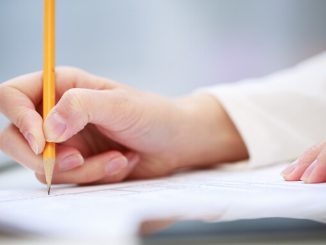
How can you prepare for GMAT quantitative questions?

The GMAT Quantitative questions section should be conceived as a test of logic skills and not a test of mathematics concepts. There is no algebra II, trigonometry, or calculus on the exam. Each of the content areas required – arithmetic, algebra, and geometry – will most likely have been covered by every test taker’s early teenage years. In fact, standardized tests taken by most high schoolers globally, whether the SAT, ACT, or national secondary education exams contain significantly more advanced math concepts than the GMAT.
So, if the GMAT math isn’t all that advanced – what makes it so challenging?
Well, the answer is simple. It’s time pressure. Academic math exams frequently have no time limit, since many require, and in some cases reward, students showing their full computational work. In contrast, the GMAT expects an average of two minutes per problem to complete each of the 31 questions, within 62 minutes. This means that a successful GMAT test-taker must be flexible in their approach. They must use all available information to most efficiently answer correctly. Initially, two skills are most helpful:
- Knowing the question types.
- Getting comfortable with mental math (i.e., doing math manually without a calculator).
Understand GMAT quantitative questions – problem solving vs data sufficiency
Each Quantitative section is composed of a roughly equal number of two question formats – problem solving and data sufficiency. GMAT problem solving questions are in a multiple-choice format with five options requiring a single correct selection. Data sufficiency questions however, have five static options requiring applicants to determine whether each of the provided conditions are “sufficient” to determine a definitive answer for the question posed by the problem.
GMAT problem solving requires an understanding of basic math skills, while utilizing the answer choices to determine how to quickly answer correctly. This can frequently mean solving halfway until a single option remains viable through logical estimation. In addition, back solving or modeling the equation to avoid excessively complex algebraic manipulations may also work. GMAT problem solving often rewards innovation over calculation. Avoid “engineer breaking” algebra by solving logically. Practice makes perfect and be sure to avoid accepting available “textbook” explanations as the only possible approach. Seeking alternative tactics often increases both accuracy and efficiency.
Although algebra can be a time-waster for GMAT problem solving, data sufficiency questions are best addressed by articulating the information provided by the problem as algebraically as possible. It is imperative to practice these questions extensively. First to memorize the answer choices, and then to master the algebraic processes required for evaluation. However, it should rarely be necessary to fully solve any algebraic information in a data sufficiency question to its complete solution. It will be “sufficient” to simply identify that manipulating the algebra would produce a single result. Ultimately, the key is to logically represent information algebraically rather than completely solving it for a single specific solution.
How to prepare for manual GMAT math concepts
To perform well, all GMAT candidates must get comfortable with mental math on the GMAT. There is no calculator available during the exam, so the first step is to become reacquainted with the basic four functions of arithmetic to improve manual calculation speed and accuracy. There is an inexhaustible resource of dynamically-produced drills available at math-aids.com. Here test-takers can practice mental math using easy multiples of 2, 5, 10, 100, and ½.
For example, consider 23 × 99. Rather than using long-form multiplication, it is probably faster to logically determine that 23 × 100 = 2,300, and then subtract 23 × 1 = 23 from that product, to find that 23 × 99 = 2,277. By practicing multiplication using these easy factors, mental math can become a strength during the exam. The math-aids.com worksheets can also be used to practice common non-integer calculations involving fractions, decimals, percentages, and radicals or exponents as well.
Beyond arithmetic, it is important to revisit how to translate word problems into algebra. Primarily this is to articulate information in data sufficiency problems mathematically. Math-aids is also a great source of pre-algebra and word problem practice worksheets. Start by memorizing common English to math translations such as:
- “what”: x (variable)
- “is”: =
- “of”: × (multiply)
- “out of”: ÷ (divide)
- “percent”: ÷ 100 or shift decimal left two places
- “what percent” or “x%”: (x / 100)
So, for instance the question what percent of 80 is 60 can be translated into an equation as (x/100)(80) = 60. Then, recognize that the easiest first step for non-integer algebra is to eliminate the fraction by multiplying the full equation by 100 so that 80x = 6,000. Lastly, eliminate zeros to simplify the final division as 600 ÷ 8 = 75 to find that 60 is 75% of 80.
Conclusion
There is no substitute for these manual drills. As soon as you recognize a need for the GMAT, and for as long as you study for the GMAT, be certain to include regular manual calculation drills. Even once you have “mastered” a topic, continue your practice. The goal is to improve your pace, as every second counts on this exam.
